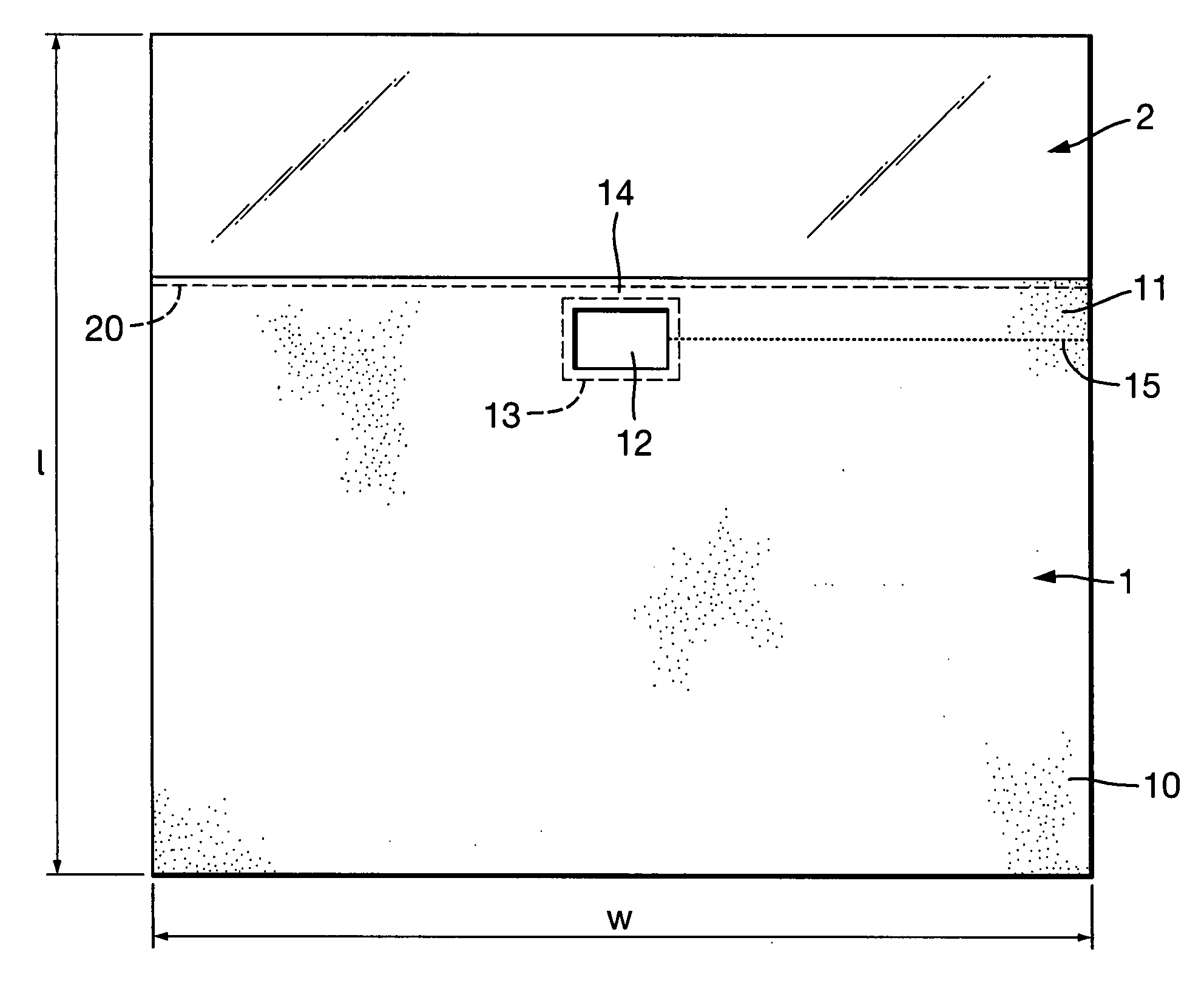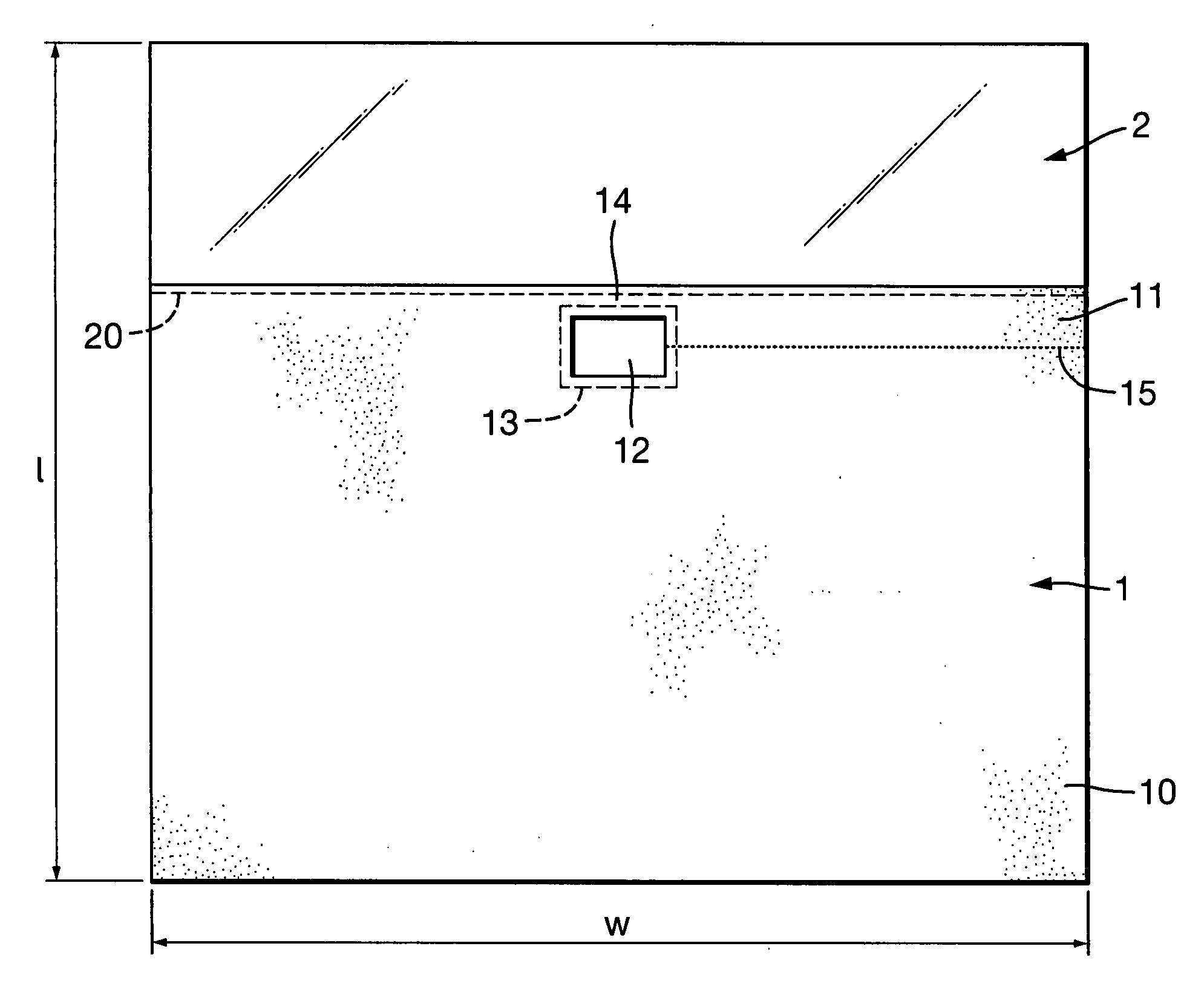Drapes
a drapery and drapery technology, applied in the field of drapes, can solve the problems that drapes are not ideally suited for tracheostomy or other procedures
- Summary
- Abstract
- Description
- Claims
- Application Information
AI Technical Summary
Problems solved by technology
Method used
Image
Examples
Embodiment Construction
[0010] The drape is rectangular with a length l of 140 cm and a width w of 160 cm. The drape is divided into a body region 1 and a head region 2.
[0011] The body region 1 is formed of a soft, spun-woven, flexible, drapeable sheet of an opaque, water-repellent single ply material. The body region 1 extends for 100 cm with its lower end 10 located, in use, in the region of the groin of the patient, and its upper end 11 located in the region of the chin. The body region 1 extends across the entire width w of the drape, this width being sufficient to cover the upper part of the body and hang down a short distance at opposite sides of the patient. The body region 1 is interrupted by an incise window 12 in the form of an open aperture cut through the material of the region and located a few centimetres from the edge of the upper end 11. The incise window 12 is located centrally across the width of the drape and is rectangular in shape being 10 cm wide and 15 cm long. The window could be o...
PUM
 Login to View More
Login to View More Abstract
Description
Claims
Application Information
 Login to View More
Login to View More - R&D
- Intellectual Property
- Life Sciences
- Materials
- Tech Scout
- Unparalleled Data Quality
- Higher Quality Content
- 60% Fewer Hallucinations
Browse by: Latest US Patents, China's latest patents, Technical Efficacy Thesaurus, Application Domain, Technology Topic, Popular Technical Reports.
© 2025 PatSnap. All rights reserved.Legal|Privacy policy|Modern Slavery Act Transparency Statement|Sitemap|About US| Contact US: help@patsnap.com


